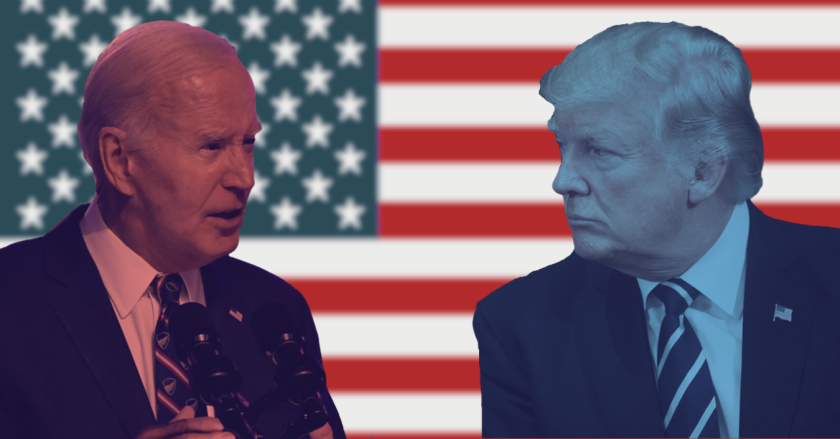In Brief:
For a brief moment, it was all about infrastructure.
Early in his presidency, the Biden administration spent lots of political capital on negotiating and winning a package of investments in transportation, energy, water and broadband infrastructure. Democrats — and especially progressive climate advocates — didn’t get everything they wanted in the negotiations. But the Infrastructure Investment and Jobs Act, which passed in 2021 and is also known as the Bipartisan Infrastructure Law, has been hailed as a historic win.
That bill, alongside the Inflation Reduction Act and the CHIPS Act, represent the administration’s biggest legislative achievements. About halfway through the five-year authorization, a little less than half of the $1.2 trillion in approved funding has been spent, flowing to thousands of projects in cities and counties across the country.
But it’s hardly a central plank in the Democrats’ campaign platform. President Biden didn’t mention the word “infrastructure” in either his speech launching his campaign in January or the speech that ended his campaign in July. Vice President Kamala Harris didn’t mention it in her presidential campaign launch speech either.
There are a number of reasons why Biden and Harris aren’t beating their chests about one of their administration’s biggest accomplishments. For one thing, there’s a long timeline between granting approval for funding and actual on-the-ground impacts from infrastructure spending.
But mostly, it’s because it’s never been a top issue for voters. “The results of the election will have far-reaching implications for infrastructure,” says Adie Tomer, a senior fellow at Brookings Metro. “But they’re not, most likely, going to be a primary motivator at the ballot box.”
Cross-Partisan Appeal
The Obama administration spent its first years focused on health-care expansion, which turned out to be a politically bruising fight that contributed to historic losses for Democrats in the 2010 midterm elections. Some critics said the administration should have focused instead on infrastructure, traditionally a less partisan issue, and preserved some political capital. It’s possible the Biden administration learned that lesson and that it saved Democrats some painful losses in 2022, says Yonah Freemark, a researcher at the Urban Institute.
The administration hasn’t shied away from touting its infrastructure record. Secretary of Transportation Pete Buttigieg, whose department oversees the lion’s share of infrastructure funding, is one of the Biden-Harris administration’s most public surrogates.
But presidential campaigns can often turn on hot-button issues such as abortion, immigration and other culture-war issues on which the parties’ views are starkly different. That’s not exactly the case with infrastructure. Although Democrats controlled the presidency and Congress when IIJA passed, the Biden-Harris administration has been happy to share credit with Republicans, referring to the package as the Bipartisan Infrastructure Law in most settings.
“Both sides seem to be happy with making large promises about infrastructure,” says Judge Glock, a senior fellow at the right-leaning Manhattan Institute. “It’s not much of a differentiating factor.”
Certainly, the parties’ views about how to invest in infrastructure and what types of projects to prioritize do differ substantially. The Trump administration’s infrastructure proposals relied much more on incentivizing private investment than direct federal funding. And partisan control of Congress and the White House will have a major influence on the next infrastructure negotiation, likely in 2026 when the IIJA expires.
If Democrats are still in control, they might try to expand on pilot programs for climate resilience and community development included in the 2021 law. Republicans would probably push in the opposite direction.
“The Republicans are likely to look for ways to reduce spending, particularly direct, construction-related spending,” says Tomer. “My guess would be that the climate-related programs are going to be the first ones under consideration.”
Localized Impacts
Still, with the existing law in place, some Republicans have issued press releases touting awards for projects in their districts funded by a bill they opposed — an apparent bit of hypocrisy that Biden has often called out in public speeches.
But some observers say both things can be true: An elected leader could oppose a proposal and still want to maximize the benefits it provides to their district. “Once it’s the law, you’ve got to work for your constituents,” Tomer says.
Two and a half years after the IIJA passed, about $450 billion has been awarded through dozens of programs. But construction projects, especially the most visible ones, take a long time to plan and build. The same leaders who approved the funding aren’t always around for the ribbon cuttings. “The planning and implementation of projects don’t match up with election cycles,” says Kevin DeGood, director of infrastructure policy at the Center for American Progress, a left-leaning think tank.
Some projects are barely visible to the public, even though they might be improving systems people use every day. Broadband infrastructure grants may provide better Internet access, but most people don’t associate browsing speeds with work done by their federal representatives. “I doubt that most U.S. residents are experiencing dramatic changes in their day-to-day lives because of the infrastructure investments,” Freemark says. “How do you campaign on something that people don’t see?”
Infrastructure spending affects diffuse networks of transportation, energy, water and communications, but its most obvious impacts are localized. Local elections sometimes turn on big infrastructure debates, like spending on roads, public transit and economic development projects. National elections don’t. When federal money finally does make it down to the local level, it’s usually all upside for political leaders in every position.
“Nobody’s opposed to having a project that’s paid for by general taxpayers in their backyard,” says Glock, of the Manhattan Institute. “That’s, in a sense, a tale as old as time.”













